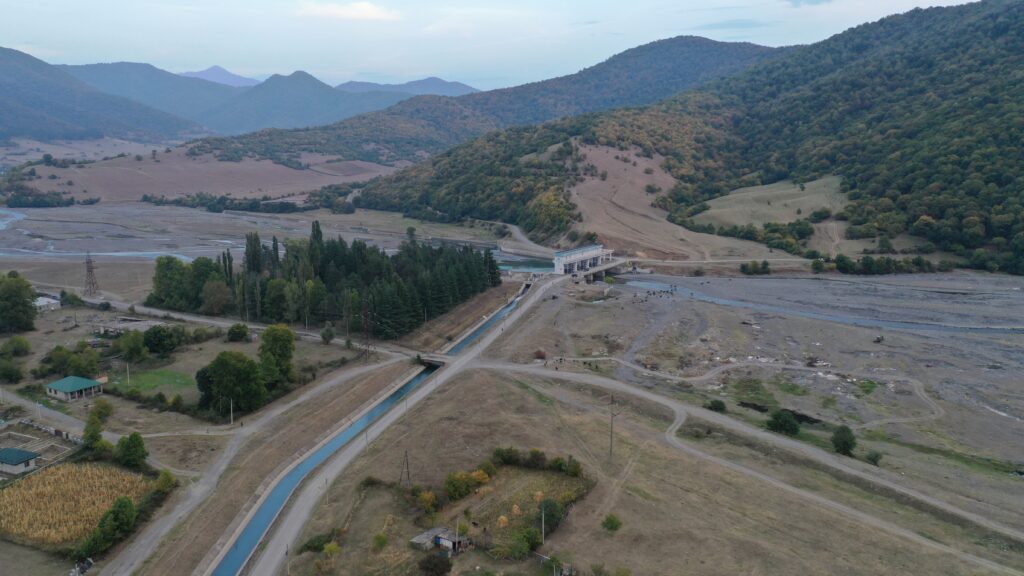The Alazani Living Lab: Field Work and Preliminary Assessment of Water Resources and Distribution in the Alazani-Iori Basin
Since the upstream of the Alazani River basin is not regulated by the reservoir, the main goal of the Living Lab is to establish a proper streamflow prediction system, which will improve the efficiency of the irrigation system during the dry season. Since March 2023, in the Kakheti region of Georgia, field work commenced to evaluate the condition of the irrigation system’s main canals located in the Alazani-Iori Basin. Hence, it was essential to learn about how local farmers and other stakeholders are facing severe water scarcity during the dry season in particular, but not only. For example, workers at the Alazani hydropower plant (HPP) informed the I-CISK team that, even though the installed capacity of the power plant is 6 MW/h (megawatt per hour), that goal has never been achieved due to a lack of water. Since this HPP is located on the Lower Alazani Irrigation canal, it highlights that the water availability might not be the only reason for water scarcity. Indeed, during the site visit, the I-CISK team detected many issues related to the irrigation system and its main canals. The Upper Alazani irrigation canal is heavily degraded, and its capacity is significantly lowered due to a high level of sand and gravel deposited in the canal. To fulfil the research, an additional site visit is planned, including a climate change and hydrological assessment, which will allow the I-CISK team to establish a stream flow prediction system together with the National Environmental Agency (NEA). This will significantly improve water resource management and planning in the Alazani River Basin.


